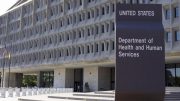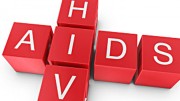On Sunday, December 1, we commemorate the 25th annual observance of World AIDS Day. According to the World Health Organization (WHO), World AIDS Day “brings together people from around the world to raise awareness about HIV/AIDS and demonstrate international solidarity in the face of the pandemic. The day is an opportunity for public and private partners to spread awareness about the status of the pandemic and encourage progress in HIV/AIDS prevention, treatment, and care in high-prevalence countries and around the world.”
WHO’s focus for World AIDS Day 2013 is improving access to prevention, treatment, and care services for adolescents (persons 10 to 19 years old), a group at high risk for becoming infected with HIV. WHO plans to release new guidance for HIV testing, counseling, and care for adolescents living with HIV on World AIDS Day 2013.
The following is a list of online resources focusing on the impact of HIV/AIDS globally and in the U.S.
The Global HIV/AIDS Epidemic
This website includes information about HIV/AIDS policy and programs, regional information, global statistics, and news. Highlights include:
- Global Report Page
- UNAIDS Report on the Global AIDS Epidemic 2012
- Country Reports on HIV Estimates
- Global HIV/AIDS – web page from CDC
- HIV InSite Countries and Regions Page – with national and regional data
Kaiser Family Foundation Information on the Global Epidemic
- The Global HIV/AIDS Epidemic
- The U.S. President’s Emergency Plan for AIDS Relief (PEPFAR)
- The U.S. & The Global Fund to Fight AIDS, Tuberculosis, and Malaria
The U.S. HIV/AIDS Epidemic: Resources from the CDC
- HIV in the United States: At A Glance. 2-page fact sheet focusing on key aspects of the U.S. epidemic with bulleted highlights and graphs
- Rates of Diagnoses of HIV Infection Among Adults and Adolescents, by Area of Residence, 2011 – United States and 6 Dependent Areas
- Diagnosed HIV Infection Among Adults and Adolescents in Metropolitan Statistical Areas – United States and Puerto Rico, 2011
- Estimated HIV Incidence in the United States, 2007 – 2010
- HIV Surveillance – United States, 1981 – 2008
- Clinical and Behavioral Characteristics of Adults Receiving Medical Care for HIV Infection
Focusing on HIV health among men who has sex with men, and transgender people
The theme of the October issue of the American Journal of Public Health is the health of sexual minorities, including lesbian, gay, bisexual, and transgender persons. The articles and editorials in the issue included:
- The Health of Sexual Minorities: A New Frontier
- The Stigma of HIV
- Only Your Calamity: The Beginnings of Activism by and for People With AIDS
- Prevalence of Gender Identity Disorder and Suicide Risk Among Transgender Veterans Utilizing Veterans Health Administration Care
- Health Disparities Among Lesbian, Gay, and Bisexual Older Adults: Results From a Population-Based Study
- Peer Victimization and Sexual Risk Differences Between Lesbian, Gay, Bisexual, Transgender, or Questioning and Nontransgender Heterosexual Youths in Grades 7-12
- Experiences of Transgender-Related Discrimination and Implications for Health
- Nonprescribed Hormone Use and Self-Performed Surgeries
- Lessons Learned From Use of Social Network Strategy in HIV Testing Programs Targeting African American Men Who Have Sex With Men
Selected Recent Articles about HIV and Hepatitis in Gay, Bisexual, and Other Men Who Have Sex with Men
Sometimes You Just Have to Have a Lot of Bitter to Make It Sweet: Substance Abuse and Partner Abuse in the Lives of HIV+ Men Who Have Sex with Men. By M.P. Andrasik, S.E. Valentine, and D.W. Pantalone, in Journal of Gay and Lesbian Social Services.
Comparison of Strategies to Increase HIV Testing Among African-American Gay, Bisexual, and Other Men Who Have Sex with Men in Washington, D.C. By C. Baytop, S. Royal, D. Hubbard McCree, and others in AIDS Care.
Exploring the Relationship Between Incarceration and HIV Among Black Men Who Have Sex with Men in the United States. By R.A. Brewer, M. Magnus, I. Kuo, and others, in Journal of Acquired Immune Deficiency Syndromes.
WHO Guidelines for HIV/STI Prevention and Care Among MSM and Transgender People: Implications for Policy and Practice. By J. Cohen, Y.R. Lo, C.F. Caceres, and others, in Sexually Transmitted Infections.
How Do Young Black Men Having Sex with Only Women Differ from Those Also Having Sex with Men? By R. Crosby, R. Pasternak, L.F. Salazar, and I. Terrell, in Sexual Health.
HIV Testing Among Immigrant Sexual and Gender Minority Latinos in a U.S. Region with Little Historical Latino Presence. By P.A. Gilbert and S.D. Rhodes, in AIDS Patient Care and STDs.
The Impact of Anticipated HIV Stigma on Delays in HIV Testing Behaviors: Findings from a Community-Based Sample of Men Who Have Sex with Men and Transgender Women in New York City. By S.A. Golub and K.E. Gamarel, in AIDS Patient Care and STDs.
The Acceptability and Feasibility of an HIV Preexposure Prophylaxis (PrEP) Trial with Young Men Who Have Sex with Men. By S.G. Hosek, G. Siberry, M. Bell, and others, in Journal of Acquired Immune Deficiency Syndromes.
Modeling the Impact of Post-Diagnosis Behavior Change on HIV Prevalence in Southern California Men Who Have Sex with Men (MSM). By A.S. Khanna, S.M. Goodreau, and P.M. Gorbach, and others, in AIDS and Behavior.
Methods to Measure the Impact of Home, Social, and Sexual Neighborhoods of Urban Gay, Bisexual, and Other Men Who Have Sex with Men. By B.A. Koblin, J.E. Egan, A. Rundle, and others, in PLoS One. Free full text also available.
Practices of Receptive and Insertive Anal Sex Among Transgender Women in Relation to Partner Types, Sociocultural Factors, and Background Variables. By T. Nemoto, B. Bödeker, M. Iwamoto, and M. Sakata, in AIDS Care.
HIV Infection and Testing Among Latino Men Who Have Sex with Men in the United States: The Role of Location of Birth and Other Social Determinants. By A.M. Oster, K. Russell, R.E. Wiegand, and others, in PLoS One. Free full text also available.
Homophobia as a Barrier to HIV Prevention Service Access for Young Men Who Have Sex with Men. By G.M. Santos, J. Beck, P.A. Wilson, and others, in Journal of Acquired Immune Deficiency Syndromes.
Socio-Contextual Factors: Moving Beyond Individual Determinants of Sexual Risk Behavior Among Gay and Bisexual Adolescent Males. By H. Torres, K. Delonga, S. Lee, and others, in Journal of LGBT Youth.
Is Serosorting Effective in Reducing the Risk of HIV-Infection Among Men Who Have Sex with Men with Casual Sex Partners? By W. van den Boom, R. Konings, U. Davidovich, and others, in Journal of Acquired Immune Deficiency Syndromes.
HIV Infection and Awareness Among Men Who Have Sex with Men-20 Cities, United States, 2008 and 2011. By C. Wejnert, B. Le, C.E. Rose, and others, in PLoS One. Free full text also available.
* Eric Brus is the Director of HIV Health Promotion of AIDS Action Committee. This report is produced by the Health Library of the AIDS Action Committee in collaboration with the New England AIDS Education and Training Center Minority AIDS Initiative Project. The full version is available online.








